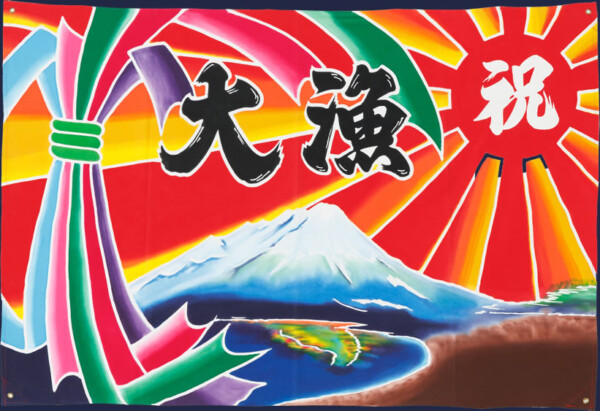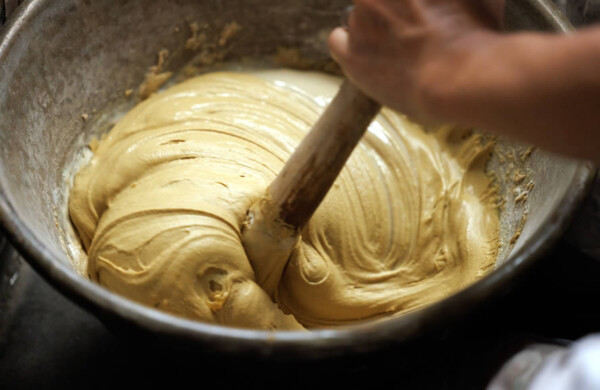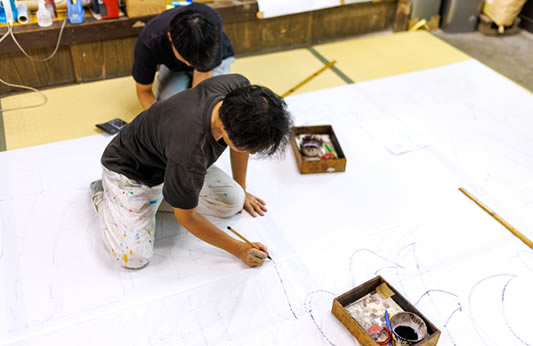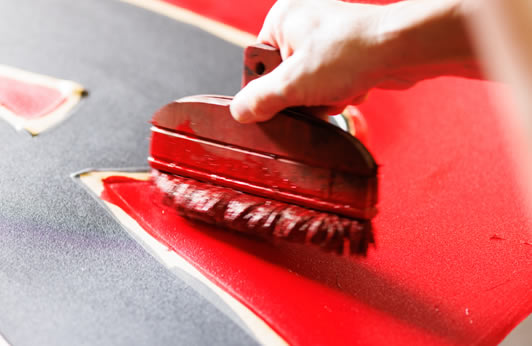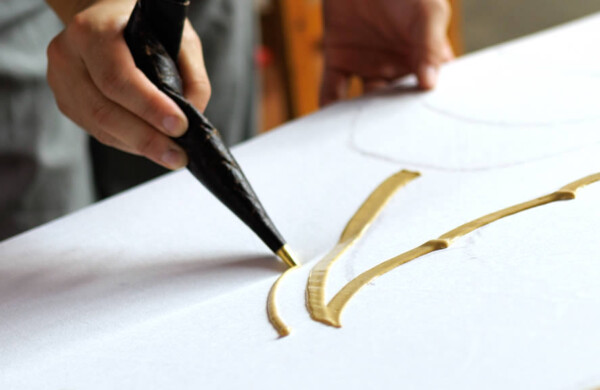About Matsuda Somemonoten
(Matsuda Dyeing Shop)
Inheriting traditional techniques
for over 300 years
Yonago City, Tottori Prefecture prospered as the castle town of Yonago Castle, a castle with a spectacular view. In the past, on the left bank of the Kamo River, which was the outer moat of Yonago Castle, there was Koya-machi, where dyeing artisans gathered, and it was bustling with indigo dyeing. Matsuda Somemonoten was established in Konya-machi in the 15th year of Genroku (1702), which was the middle of the Edo period. Since then, the traditional dyeing technique has been inherited for more than 300 years, and now, two generations, the 13th and 14th generations, are protecting the goodwill. The local people have long known Matsuda as “Matsuda of Koya-machi” when it comes to dyeing shops, and as a long-established dyeing shop, along with the traditional dyeing method, it continues to carry on the origin of the town’s name, Koya, to this day.
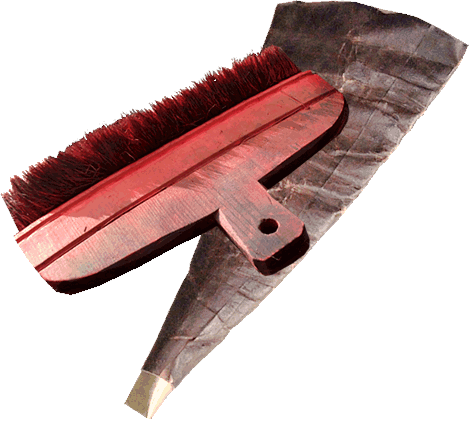
Matsuda Somemonoten was founded with indigo dyeing. Later, in the early Meiji period, the 10th generation brought back the traditional technique “Tsutsugaki-zome (glue resist dyeing)” from Kyoto, which has been handed down to the present day. There are Yonago Port and Sakaiminato, a port city, near the workshop, and the shop has long been good at making big-catch flags using “Tsutsugaki-zome”. The lively patterns and vivid colors of the big catch flags are very popular. “Tsutsugaki-zome” which is finished one by one according to the experience and intuition of outstanding craftsmen creates a deep flavor that touches the heartstrings.
The craftsmanship that has been handed down from generation to generation by the head of the family has been highly evaluated, and the 11th generation Yoshiro, the 12th generation Hiromi, and the 13th generation Nariki have been certified as Tottori Prefecture Traditional Craftsmen. In addition, the 11th generation was awarded the Traditional Craft Industry Merit Medal.
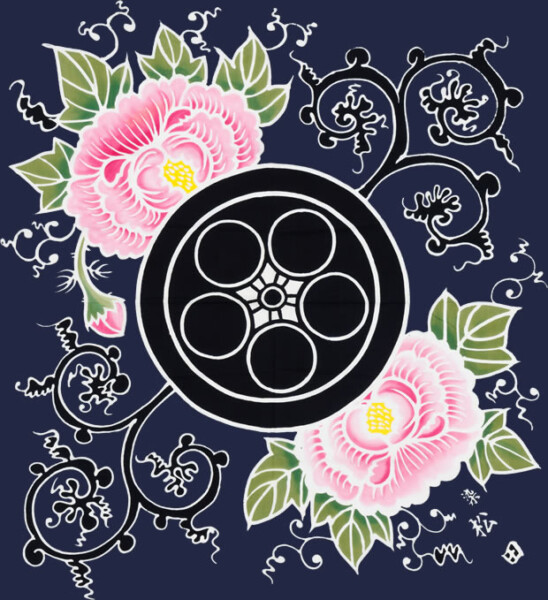 The dyeing culture of Japan flourished in the Edo period. As the country entered a period of peace and prosperity, the production of cotton cloth increased, and the common people of Edo began to enjoy wearing chic and fashionable kimono clothes. The aesthetic sense of living that changed along with this trend led to the development of dyeing. Beautiful and complex dyeing became possible using a variety of techniques, such as “Roketsu-zome (batik dyeing),” “Komon-zome (paper-pattern dyeing),” and “Yuzen-zome (paste-resist dyeing).” “Kata-zome (stencil dyeing),” in which a large amount of the same pattern is dyed, has also developed dramatically. It is said that “Tsutsugaki-zome” was most developed and gorgeous during the Edo period.
The dyeing culture of Japan flourished in the Edo period. As the country entered a period of peace and prosperity, the production of cotton cloth increased, and the common people of Edo began to enjoy wearing chic and fashionable kimono clothes. The aesthetic sense of living that changed along with this trend led to the development of dyeing. Beautiful and complex dyeing became possible using a variety of techniques, such as “Roketsu-zome (batik dyeing),” “Komon-zome (paper-pattern dyeing),” and “Yuzen-zome (paste-resist dyeing).” “Kata-zome (stencil dyeing),” in which a large amount of the same pattern is dyed, has also developed dramatically. It is said that “Tsutsugaki-zome” was most developed and gorgeous during the Edo period.
“Tsutsugaki-zome”, a popular technique
for its vivid colors and patterns
Let us briefly introduce the “Tsutsugaki-zome” technique. First, dye-proof glue is squeezed out of a tube made of paper and placed on the area of a fabric to be left white. After placing the glue, color the area with a paint brush or brush. After placing it, color it with a brush or brush. After that, when the dye-proof glue is washed away, the area where it was placed will stand out clearly in white. Dye-proof glue is a mixture of glutinous rice and rice bran. Its origins are believed to date from the Nara to Muromachi periods. The reason for using glutinous rice and rice bran comes from the staple food of the time, and it was introduced as a dyeing method unique to Japan.
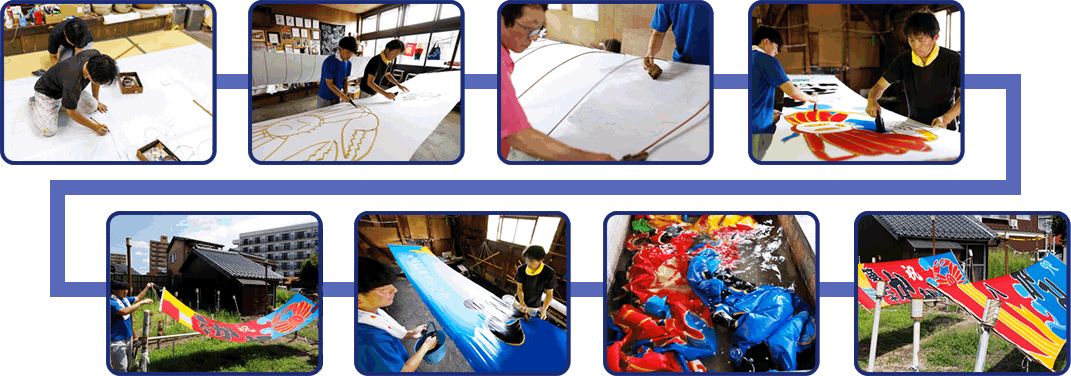
The greatest appeal of “Tsutsugaki-zome” is the vivid colors and patterns that come from the craftsmanship and painstaking work. By using brushes, it is possible to create a variety of expressions, such as delicate and elegant, sometimes bold and unrestrained, and sometimes generous. Even though the patterns are the same, they are all hand-painted by artisans. Furthermore, since the hardness of dye-proof glue varies depending on the temperature and humidity at that time, the amount of bleeding and the degree of dyeing will change subtly. Therefore, no two dyed items are alike, and only one piece of dyeing in the world is produced.

“Zuisendo” was opened in 2020 to convey the excellence of “Tsutsugaki-zome” to many people. The shop proposes to incorporate traditional Japanese beauty with a modern twist into modern life, where unique designs are enjoyed in a variety of ways. The shop sells dyed goods that can be used in everyday life, and fashion accessories in vivid, uniquely Japanese colors. Custom-made products are also available, and you can order “Tsutsugaki-zome” dresses, aprons, bags, and more. “Zuisendo”, where even the younger generation can casually stop by, is located in the Yokkaichi-machi shopping district in Yonago City. The shop also plays a role in revitalizing the local area.
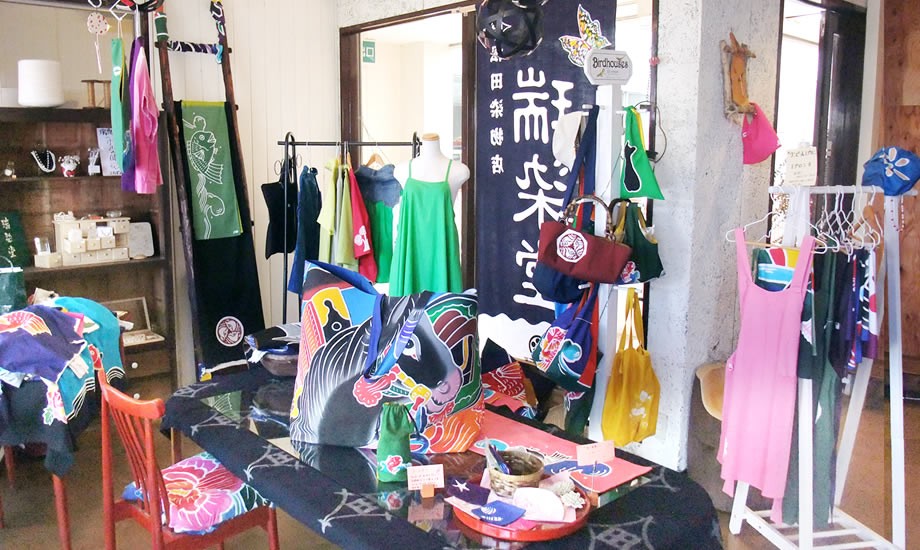
Today, because “Tsutsugaki-zome” is very labor-intensive, there are few dye houses in Japan that carry on the tradition. We, Matsuda Somemonoten is the only one remaining in Tottori Prefecture. The reason why we still stick to hand-dyeing is because it allows us to create a variety of expressions depending on the force of each artisan’s fingertips. Above all, we would like to cherish the heartfelt “warmth” that oozes out through the people’s handwork of dyeing. We will continue to produce dyed goods with sincerity while preserving the traditional techniques of our craftsmen as we have done in the past.
Company Profile
| Company name | Matsuda Somemonoten Co., Ltd. |
|---|---|
| Location | 47 Koya-machi, Yonago City, Tottori Prefecture, 683-0062, JAPAN |
| Phone number |
0859-22-3358 |
| FAX number | 0859-32-5712 |
| E-mail address |
|
| Founded | 1702 |
| Legalization | April 9, 2021 (the 3rd year of Reiwa) |
| Capital | 4 million yen |
| Representative | Nariki Matsuda |
